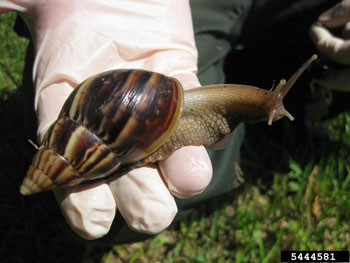.jpg) |
| Eduards Baltars, Aug 23, 1964. Baltimore County. Polygonum perfoliatum (Persicaria perfoliata). Norton Brown Herbarium University of Maryland, College Park #3603: for the Story of the Introduction of Mile-a-Minute see; History of the Introduction of Mile-a-minute weed (vine) - Persicaria perfoliata |
We live
in a society where it is not so much what you know but what boxes you have
checked off along the way to a piece of paper that is important. And then once
armed with the correct documentation, the inclination is to assume those who
have not checked the same boxes must by definition not have knowledge or
information worth knowing or hearing.
Edouards
Baltars had much to offer a world that did not listen and is paying the price.
Eduards Baltars left a legacy quietly forgotten that sounded the alrm about
ivnasive species before invasive species issues were taught or thought about or
even cool. Edouards Baltars lived and worked in forgotten silence at the very
beginning of the ideas of invasion biology.
And
because he was "just" a carpenter, those who should have been listening, never heard his crystal clear clarion call to action; his warning
about Mile-a-minute vine in North America. 15 years before the modern literature began to ring with alarm, the knowledgable carpenter saw, collected and stated the problem of Persicaria perfoliata, which he knew as Polygonum perfoliatum.
Eduards
Baltars was not just a carpenter of course, but a trained botanist without the proper creditals or language skills to get along in his adopted country. Born
in Riga, Latvia, he and his wife, Marta, had fled the country after World War II arriving in the United States in 1944. Here because his language skills were
not consider adequate , the university trained botanist found work as a carpenter. He knew enough to teach or work in a public research institution,
but there was no mechanism that recognized his knowledge and experience.
Over the
next two decades he would devote his free time to Maryland's flora volunteering his skills and knowledge to plant and carefor a native plant garden in Baltimore,
as well as collecting and mounting at least 287 botanical specimens for various U.S. herbaria. He did this at no pay for over 20 years enriching our knowledge of our natural resources because he loved plants and learning.[1]
Among his sheets of dried botanical plants carefully preserved are multiple collections of P. perfoliata, mile-a-minute. And here is the stunning surprise for those who think they know about this invasive plant: The literature mentions Moul, 1946, and then Hinkman and Hinkman,1979, and from there off to the races with Riefner and Windler, 1979. But the quiet carpenter had found this species in 1959 at the "border
of Gunpowder Falls N[orth] of Corbett Rd, E[ast] of Corbett". Only two years earlier another "uneducated" naturalist, Floyd Bartley, had found the invasive mile-a-minute in Owings Mill, Maryland. Both men submitted their specimen to the Smithsonian.[2]
This
however is not the end of the story, for identifying but not notifying is to
not complete the circuit of early detection and rapid response (EDRR). Eduards Baltars
did not stop for on August 23, 1964 on a collection specimen sheet he typed:
"according to my observation Polygonum perfoliatum is rapidly spreading Maryland. I know 3 locations in Harford County and in Baltimore County it grows along streams and
railroads from the Pennsylvanian border south to Coockeysville. N .W. of Phoenix (Baltimore Co.) is 3/4 mile stretch along a railroad where all shrubs
are covered with this pest. In some places it grows together with P.scandens."
This
1964 specimen was colelcted at the border of Gunpowder Falls, along the
railroad southeast of Sparks in Baltimore County Maryland.
As I try
to find funding that would allow me to begin to inventory our disappearing
collections, I am reminded of a saying: Nature
communicates the past to the future, by storing information in the present.
Eduard Baltars is shouting at us here
and now from the past, and we continue to be deaf and dumb; our needs do not
seem to include the changes around us; or is it that we do not want to know? My
quest to find funding is as quixotic in as Baltars' incessant plant collecting
and clear warning.
.
Bibliography
Edouards Baltars; E Fisher; et al. List of plants collected by Edouards Baltars in Maryland, 1951-1971, not included in Norton & Brown's catalogue of 1946. Cylburn Park Wildflower Preserve and Garden Center. Baltimore, MD. p.34
[1]
Isaac Rehert. June 19, 1971. Walk With
Plant Specialist Presents Variety of Lessons. Baltimore Sun
[2] Botany
Collections. Smithsonian Museum of Natural History. reference numbers: Bartley 2313406; Baltars 2313406.


